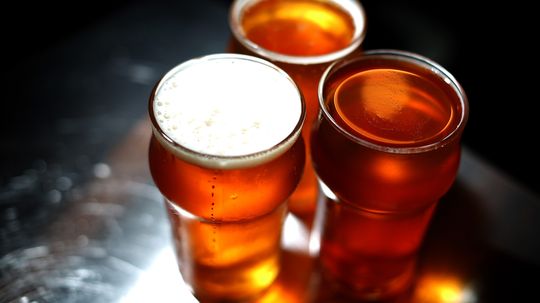Unveiling the Meticulous Process that Transforms Hops and Barley into Liquid Gold
A Symphony of Ingredients: The Building Blocks of Beer Production
In order to fully comprehend the intricate mechanics behind brewing beer, one must first delve into its fundamental ingredients. At its core, beer is a harmonious blend of water, malted barley, hops, and yeast. Each ingredient plays a crucial role in shaping the final product.
Water acts as the canvas upon which brewers paint their masterpiece. Its mineral content greatly influences both taste and mouthfeel. Malted barley serves as the backbone of beer production; it provides fermentable sugars necessary for yeast to work its magic.
Hops bring complexity to this symphony by imparting bitterness, aroma, and flavor profiles unique to each variety used. Lastly, yeast takes center stage as it converts sugar into alcohol through fermentation while also contributing subtle nuances that define different beer styles.
The Alchemical Transformation: From Mash Tun to Fermentation Vessel
Once these key ingredients are assembled in precise quantities dictated by carefully crafted recipes known as brewer’s formulas or “mashes,” they undergo an alchemical transformation within various specialized vessels.
The journey begins in a mash tun where hot water meets crushed malted barley resulting in enzymatic reactions that convert complex starches into simpler sugars suitable for fermentation. This process is aptly named mashing.
The sweet liquid extracted from mashing is then transferred to a boiling kettle where hops are added at specific intervals during boiling. This step extracts essential oils from hops while also sterilizing the wort (unfermented beer) and balancing flavors with bitter compounds called alpha acids.
After boiling comes rapid cooling, achieved through a heat exchanger. The cooled wort is then transferred to a fermentation vessel where yeast eagerly awaits its feast. Fermentation takes place over several days or weeks, during which yeast consumes sugars and produces alcohol and carbon dioxide.
The Art of Conditioning: Maturation and Carbonation
Once the primary fermentation is complete, beer enters a crucial phase known as conditioning. This stage allows flavors to meld together harmoniously while any remaining sediment settles at the bottom of the vessel.
Maturation can occur in various vessels such as stainless steel tanks or wooden barrels, each imparting distinct characteristics to the final product. During this period, flavors continue to evolve and develop complexity.
To achieve desired levels of carbonation, brewers often introduce additional sugar or fermentable substances before transferring beer into bottles or kegs for secondary fermentation. This process creates natural carbonation by trapping carbon dioxide within the container.
A Toast to Mastery: The Culmination of Skillful Craftsmanship
In conclusion, brewing beer is an intricate art form that demands precision, expertise, and unwavering attention to detail. From selecting quality ingredients to orchestrating complex chemical reactions during mashing and fermentation processes – every step contributes towards creating liquid gold that tantalizes our taste buds.
So next time you raise your glass filled with frothy goodness, take a moment to appreciate the craftsmanship behind it all – for it truly represents centuries of perfected techniques passed down from one generation of master brewers to another.


